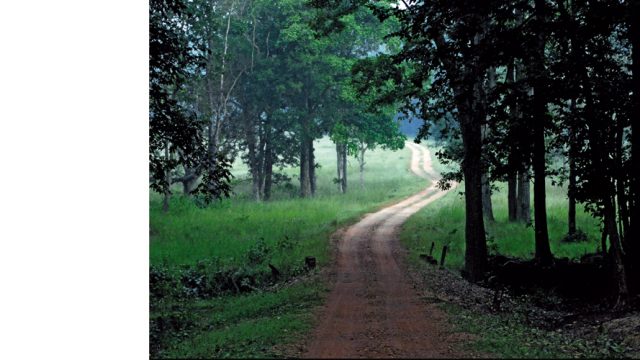Nature is quite remarkable. Its ability to rebound against the ravages and plundering of mankind—surprisingly quickly and with very little help—never ceases to astound me and gives my often troubled heart continuing reason to believe that what we have lost, can, with vision, energy and enterprise be restored.
I have seen it happen on the borders of Kanha Tiger Reserve in Madhya Pradesh. Good friends bought 55 acres (now 110 acres) of farmland in 2007, large open fields bordering degraded territorial forest. They called it rather appropriately, Singinawa, Nepalese for ‘Protectors of the Sacred forest’, and set out with reverential zeal to restore their barren land, planting native trees and shrubs, setting aside land for meadow grasses and building a large waterhole for wildlife. They also built a few tasteful bedrooms carefully planned around the sides of the property, to allow the core of the sanctuary to be reborn.
Bingo. Within two years they had their own private nature reserve. How fantastic is that? There was a resident leopard. Spotted deer grazed contentedly every night. The occasional sloth bear or even tiger spoor was noted and birds and their busy nest-making activities came back to this new Eden with wild abundance. Next, they worked with their neighbours, helping their schools, and with funding from TOFTigers, ran projects to make their villages plastic free and supportive of new medical facilities. They encouraged local tribal art and had a tribal festival that brought alive ancient cultural dances that were slowly dying for want of an audience. It wasn’t just a natural paradise—local people were a part too. Rewilding is the name given for its form today and its final stamp of approval has been the arrival of wild dogs or dhole on the property—the ultimate accolade of wildness.
So, if it can be done on 100 acres, why not 1,000? Why not 10,000 acres? What wasteland or denuded forest terrain wouldn’t yearn for the same tender loving care, and protection afforded to the new sacred landscapes of Singinawa Jungle Lodge?
What’s the limit to such vision? Could we stitch back India’s forests, in a way that has so successfully been done in other parts of the world, using in part the economic drivers of nature tourism to fund and sustain it? India already has many visionaries who are literally turning back the clock for nature, creating private sanctuaries and community owned forests around the country, from farmlands besides forests to unviable coffee plantations. Often they are sustained by wildlife lovers happy to spend their holidays enraptured in these newly restored natural havens.
Rewildling is the theme of the 4th TOFTigers Wildlife Tourism Awards, done in association with Outlook Traveller, with the best of the best announced at a Gala dinner in New Delhi in September. These Awards are aimed at highlighting and rewarding those individuals, businesses, service providers, naturalists, guides, community enterprises, parks and sanctuaries who are leading the way in the Indian subcontinent in using nature tourism to enhance a range of conservation goals.
Each award winner, in their own way, will be pioneering new ways to support and inspire wildlife conservation, engage local communities and help this restoration of wildlife habitat through their vision, drive and action.
Play your part—help us rewild India—and vote now for your favourites. Vote on toftigers.org/TOFTigersAwards/toftigers-awards-2016




